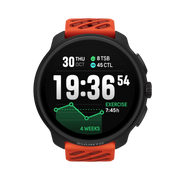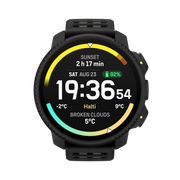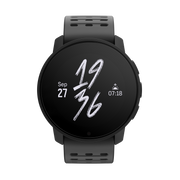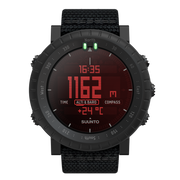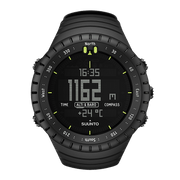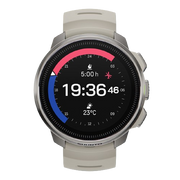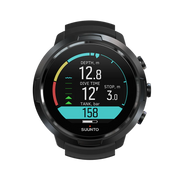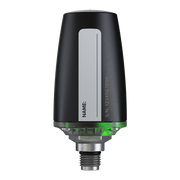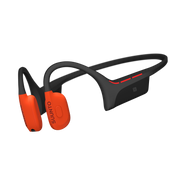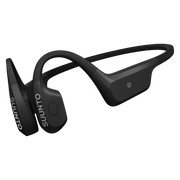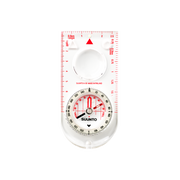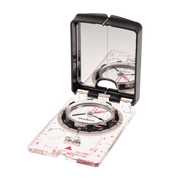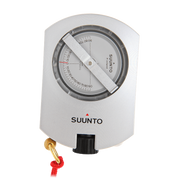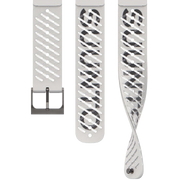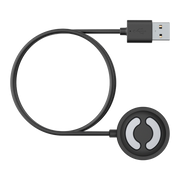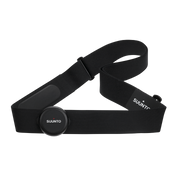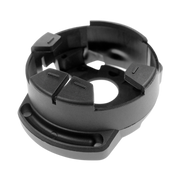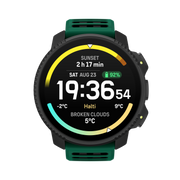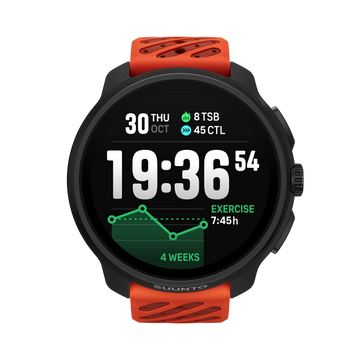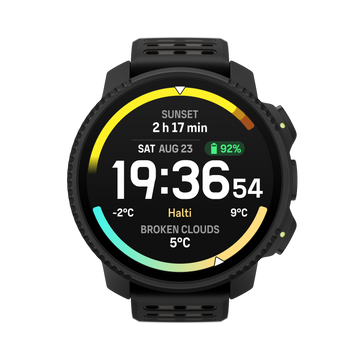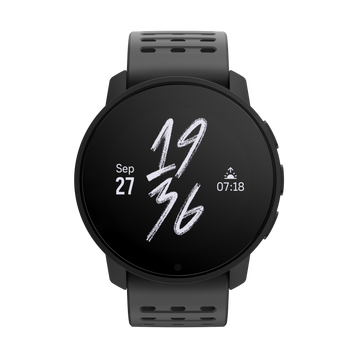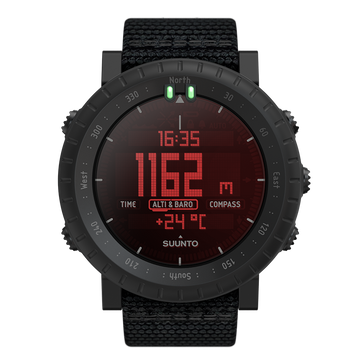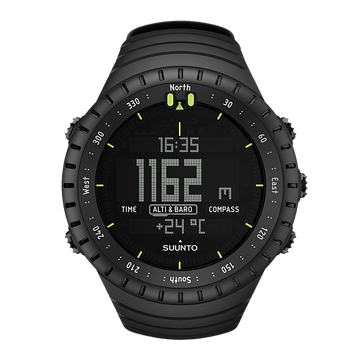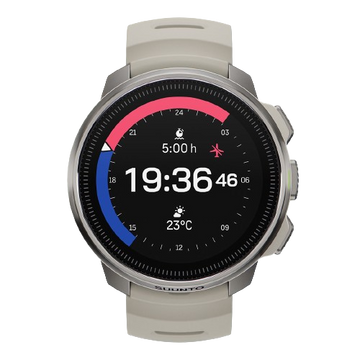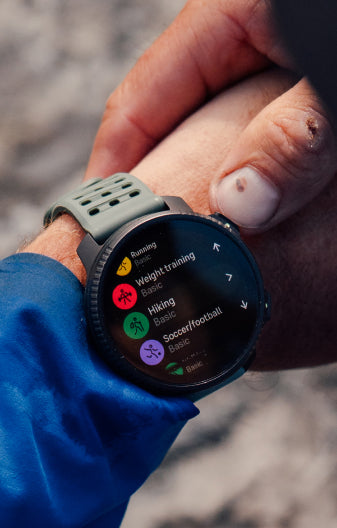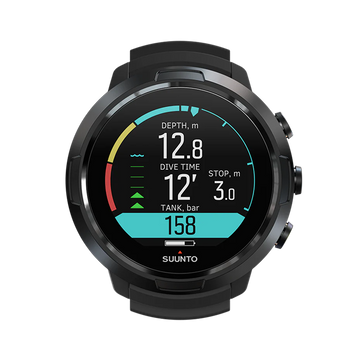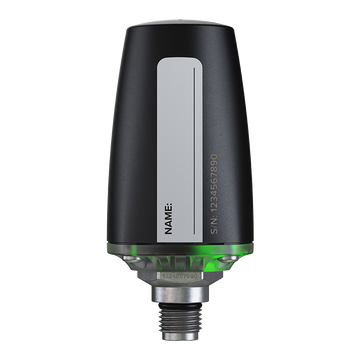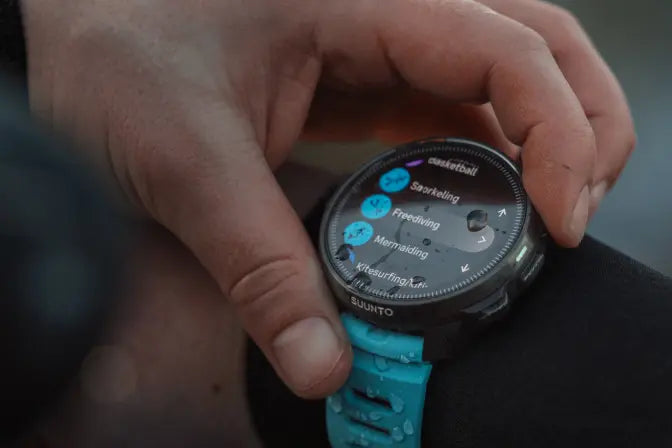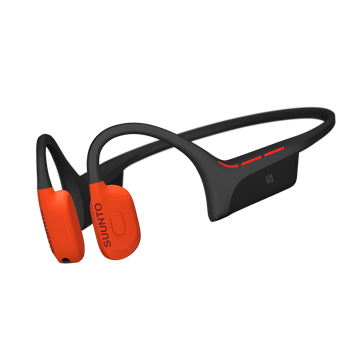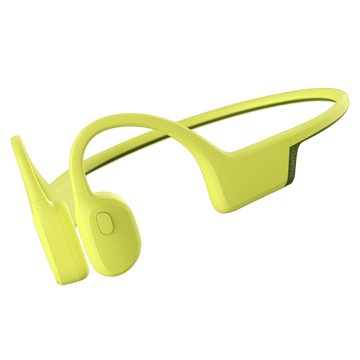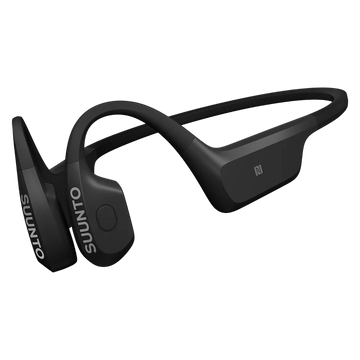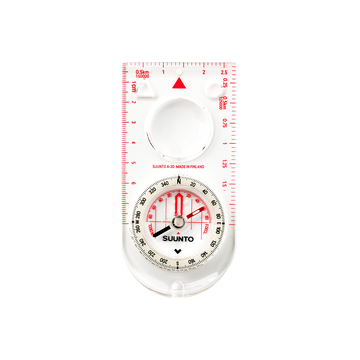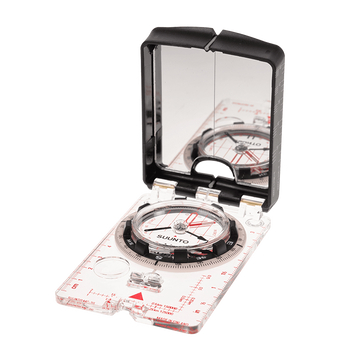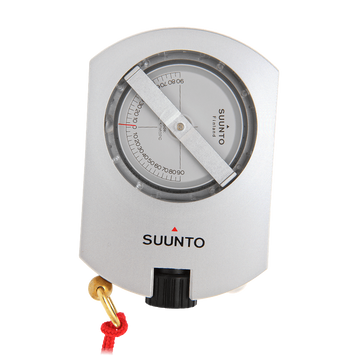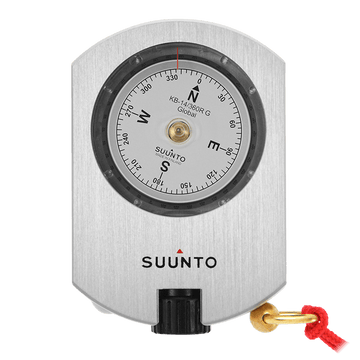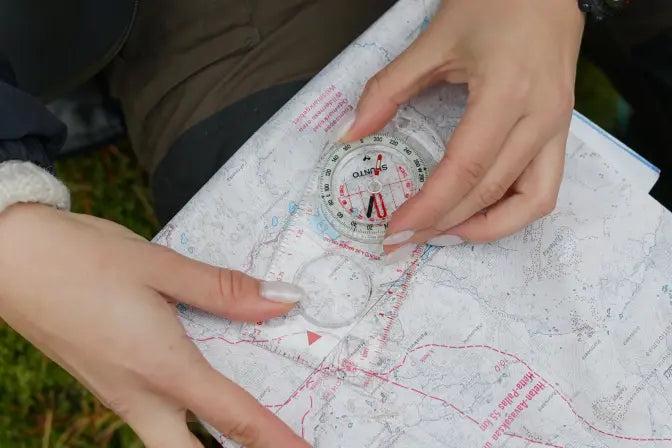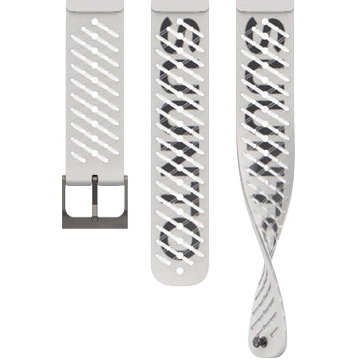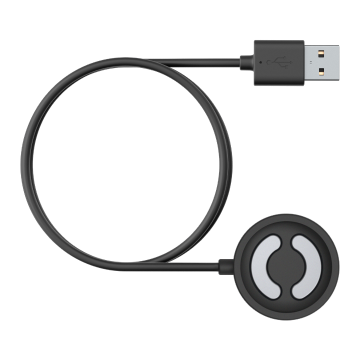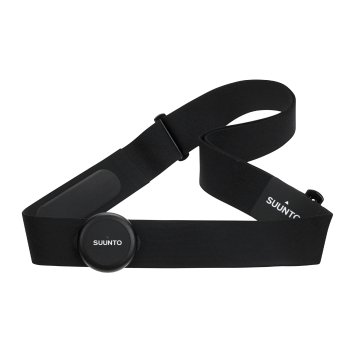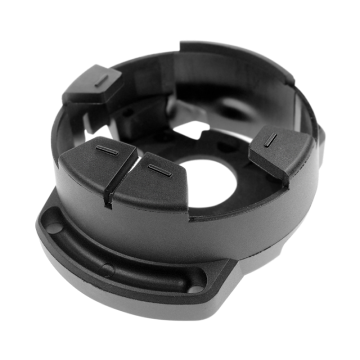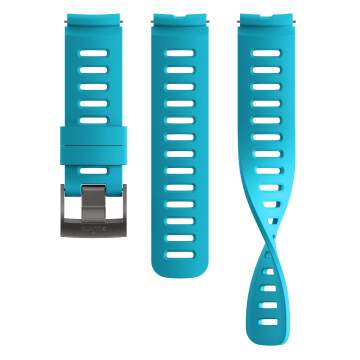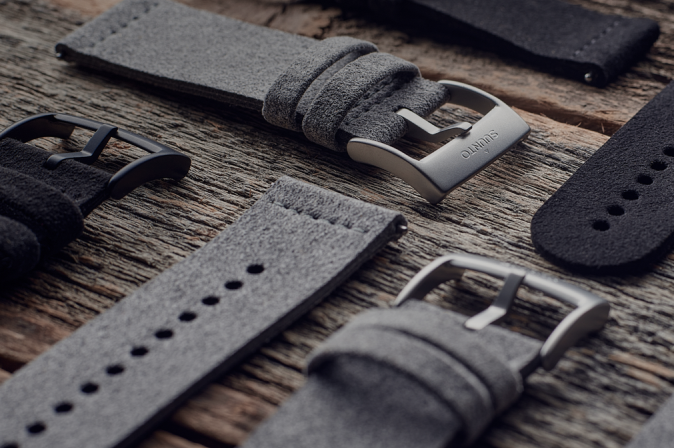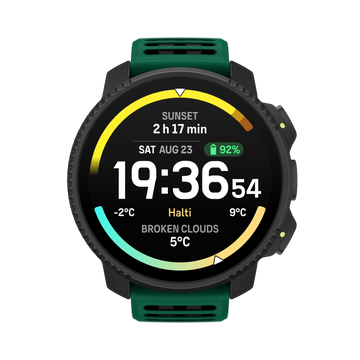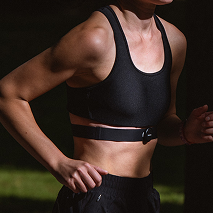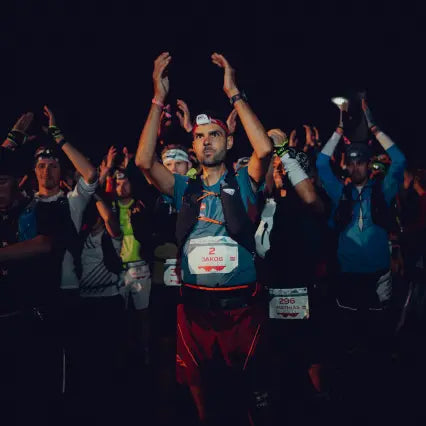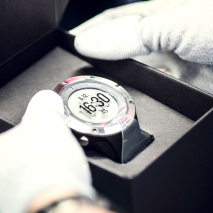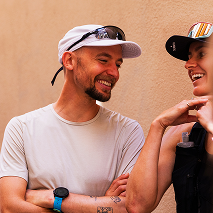

Suunto Blog

Sarah Perry breaks the women’s Backyard Ultra world record with 95 laps
Suunto Ambassador Sarah Perry ran an incredible 637 km in 95 hours at the Big Dog’s Backyard Ultra in Tennessee, breaking the women’s world record.
A maths teacher and mountain rescue volunteer from Cumbria, England, Sarah is known for her love of long days on the fells – usually with her dog in tow. But even with years of endurance running behind her, this achievement was something else entirely.
“It was the most epic experience,” Sarah says. “I enjoyed every minute and was so grateful to be there. There were serious lows – the heat, sickness, IT band pain – but so many highs too. I loved meeting the other competitors and running further than ever before.”
Big's Backyard Ultra was Sarah’s sixth Backyard Ultra, and experience clearly paid off. The event’s unique format – a 6.7 km (4.167-mile) loop every hour on the hour until only one runner remains – requires not just fitness, but faultless pacing and mental resilience. This distance ensures that if a runner completes one lap every hour for 24 hours, they cover exactly 100 miles in a day.
“The key is to simply run the lap that you’re in and not think about the bigger picture,” she explains. “You have to manage the small problems and trust that things will get better – and often they do.”
As laps turned into days, Sarah’s sleep strategy became a critical part of her success.
“I mastered sleeping this time,” she says. “I’d run the night loop, then come in with enough time to eat, drink, do any other admin, and grab a few minutes of sleep. Even a three-minute nap every hour can work wonders!”
Her focus never wavered – even after surpassing the previous world record.
“Once I’d broken the record, I was really focused on making it to 100 yards,” Sarah says. “I still had it in my legs and head to keep running but a back issue stopped me. I was disappointed but proud.” [Editor’s note: a yard in Backyard Ultra jargon refers to a full 6.7 km loop.]
Throughout the race, Sarah relied on her Suunto Vertical 2 – and the Backyard Ultra SuuntoPlus feature – to manage pacing and timing.
“I loved the Backyard Ultra feature,” she says. “All I need to know is how far I have left in each loop and how much time until the next lap. It’s perfect.”
Sarah is still soaking up the experience and the fact that she is now the world record holder.
“It feels slightly surreal and hasn't really sunk in yet! I always have a variety of goals – number one was to get a PB and then I hoped I could aim for the women's record. I would love to run 100 yards, so this will be my next challenge!”
Follow Sarah on Instagram
Sarah Perry’s Big Dog’s Backyard Ultra in numbers
Laps: 95 (New World Record)
Distance: 637 km / 396 miles
Total duration: 95 hours
Total running time: 81:07:08
Fastest lap: 39:53
Average lap: 51:13
Calories: 37,537
Steps: 822,107
Sleep: No data available
Watch: Suunto Vertical 2
Battery consumption: 87% (13% at finish)
All images by Jacob Zocherman / @searchingforzocherman

8 Essential Running Form Drills
Improve your running technique with these essential running form drills – and follow them as a SuuntoPlus Guide on your watch!
UPDATED ON Sep 26, 2025
In the previous weeks we have talked about running economy and given some key areas to focus on in your running technique. But how to actually change something or to improve? Here are XTERRA World Champion and professional coach Josiah Middaugh’s essential running drills for distance runners – with videos (at the end of the article)!
What's the Importance of Proper Running Form?
Running isn't just about putting one foot in front of the other — the way you move can make a big difference in how far, fast, and comfortably you go. Proper running form plays a key role in:
Preventing injuries: Efficient movement patterns reduce unnecessary stress on joints and muscles, lowering the risk of common issues like shin splints, knee pain, and hip discomfort.
Improving efficiency: Good form helps you conserve energy, so you can run longer distances or pick up the pace without tiring as quickly.
Boosting performance: With smoother mechanics, your stride becomes more powerful and fluid, translating to better speed and endurance.
Supporting better breathing: Upright posture opens the chest and lungs, making it easier to take in oxygen and fuel your run.
Building longevity: Consistent, injury-free training keeps you running stronger for years to come.
Follow These Running Form Drills on Your Suunto!
With the help of SuuntoPlus Guides, you can now follow these running form drills on your Suunto watch.
Before starting a running exercise on your watch, go down to exercise options and select ’Running Form Drills’ from the SuuntoPlus Guides menu. Start the workout and you will see step-by-step guidance on one of your watch screens. Swipe left until you see it. Press lap (lower right button) to advance from one step to the next one.
Read on to learn the drills!
1. Skip with High Knees ("A" Skips)
Drive your knee up forcefully lifting you off the ground. Keep movements primarily in the sagittal plane. Keep your foot dorsiflexed, which means your toes drawn up towards your shin. This is a small skip since you land on the same foot and then switch. (Scroll down for a video of all the drills.)
Why?
A Skips help reinforce the fundamentals of efficient running. By practicing knee drive, posture, and rhythm in a controlled way, this drill strengthens the muscles that power your stride and teaches your body to move with more coordination and balance. Over time, it makes your running form smoother, lighter, and more energy-efficient.
2. Run with High Knees
Similar to the "A" skips, but instead of skipping there is a quick transition from one foot to the other, just like running. Focus on breaking the vertical plane with your thigh each time.
Why?
High knees improve running posture, leg turnover, and coordination. They strengthen your hip flexors and core while training you to run more lightly and efficiently, which translates to better speed and endurance.
3. "B" Skips
This is just like the "A" skip, except after you drive the knee up, then extend the knee. Knee extension happens passively as you snap the leg back down with your glutes and hamstrings, pawing your foot to the ground.
Why?
B Skips improve stride mechanics by combining knee lift with controlled leg extension. This builds strength, coordination, and flexibility, helping you run with greater power and efficiency.
4. Butt Kicks (Heel to Butt)
Traditional butt kicks are usually performed incorrectly, swinging the heel in a half circle towards the butt. Instead, draw the keep up in a straight line towards the bottom of the butt or top of the hamstrings. To do this, allow the knee to come forward, but not quite as high as the high knees drill.
Why?
Butt kicks improve hamstring flexibility, promote a quick leg turnover, and encourage a light, efficient foot strike. They also help balance muscle use, reducing injury risk and enhancing running form.
5. Power Skips
This has all of the same points as the "A" skips except you are going for more height. Momentum is created by driving the knee up and also forcefully pushing off the ground.
Why?
Power skips develop explosive strength, improve stride length, and enhance coordination. They train your body to generate more power with each step, boosting running speed and efficiency.
6. Carioca Drill
Most running is performed in the sagittal plane, but stabilizing also occurs in the frontal plane. The carioca drill is a side ways motion requiring adduction/abduction and coordination. Face sideways and cross your trailing leg in front and then behind and you continue in the sideways direction. Continue facing the same direction for your return trip.
Why?
The Carioca drill improves hip mobility, coordination, and agility. It strengthens stabilizing muscles, enhances balance, and trains efficient movement in multiple directions — all of which benefit running form and injury prevention.
7. Bounding
Bounding is a higher intensity running drill designed to improve power and efficiency. Essentially bounding is just an exaggerated run with lots of vertical and horizontal displacement. Go for both height and distance with each stride. To keep from skipping, try jogging 5-10 yards before starting the drill. These can be performed on flat ground or uphill.
Why?
Bounding builds explosive power, improves stride length, and strengthens leg and core muscles. It trains your body to generate greater force with each step, enhancing running efficiency and speed.
8. Strides
Strides are just controlled sprints. Gradually increase speed for 30-40 meters and then maintain high speed with good, controlled form for another 40-60 meters. The key is not to strain or sprint all out. Make it look easy. I like 70-100 meters for these on a relatively soft surface such as a rubberized track or turf.
Why?
Strides improve running efficiency, cadence, and posture. They train your body to maintain good form at higher speeds, enhance muscle recruitment, and prepare you for race pace or speed work.
Watch all the running form drills on video!
Watch coach Josiah's essential running form drills here.
Josiah Middaugh is a XTERRA Pan America Champion and 2015 XTERRA World Champion. He has a master’s degree in kinesiology and has been a certified personal trainer for over 15 years (NSCA-CSCS).
Images and video by Matt Trappe

Martina Valmassoi & Dakota Jones swap roles in Crewing
In ultra running, the crew is often the unsung hero. Crewing tells the story of Martina Valmassoi and Dakota Jones as they switch roles between athlete and supporter across two demanding races.
Through La Sportiva Lavaredo Ultra Trail by UTMB in Italy and HOKA Val d'Aran by UTMB in the Pyrenees, Martina and Dakota experience both triumph and heartbreak. When Martina’s race in her home mountains takes an unexpected turn, Dakota is there to guide her through disappointment. Just a week later, the roles reverse as Martina helps Dakota push through doubt and exhaustion toward a hard-earned top-10 finish.
The film captures the resilience, trust, and deep connection that remind us: trail running is never just a solo sport. Along the way, you’ll also pick up insights into the art of crewing – valuable lessons you can bring into your own races or when supporting others.
Watch the full documentary below and experience the power of showing up for each other:

Community-powered pre-race tunes
Last week we asked you to share your favorite pre-race tunes. Here they are!
The opening track, Conquest of Paradise, needs no introduction to anyone who has stood on the UTMB start line. It’s the ultimate pre-race anthem.
From there, the playlist follows the rhythm of race day itself: calm and steady songs to carry you through the pre-start nerves, then uplifting beats and grooves to help you settle into pace.
As the kilometers add up, the music shifts into hard-hitting hip hop, gritty rock riffs, and big anthems to keep your legs turning. And finally, it all culminates in explosive finish-line bangers – the kind of tracks that make you sprint when you thought you had nothing left.
Several Suunto ambassadors suggested their own songs. Can you match these five athletes with their tracks?
Courtney Dauwalter
Toni McCann
Abby Hall
Ryan Montgomery
Dan Jones
How It’s Done
Get Up 10
Lose Yourself
Let’s Go Crazy
Into You
You can find the right answer in the comments of the original post!
Community-powered Pre-Race Playlist
Learn more about the new Suunto Wing 2 – the ultimate, open-ear headphones for running!

Running with music: How Kimi Schreiber and Gordon Clark find their flow
Some runners chase silence. Others chase the perfect beat. For Suunto athletes Kimi Schreiber and Gordon Clark, the right audio – whether it’s music, podcasts, or both – can turn a good run into something unforgettable.
Mood over miles
For Kimi, music is inseparable from running.
“I always run with music — in training and in competitions,” she says. “Every session, every run, and every day is unique. That’s exactly how I feel about choosing my music: it’s all about mood, not intensity.”
Her playlist changes depending on how she feels that day, but there’s one moment where it matters most — right before the start.
“That’s when I need music the most. It keeps my nerves in check and gives me that final boost of self-confidence. Without it, running wouldn’t feel the same for me.”
Kimi’s approach is deeply personal. Music isn’t just about beats per minute — it’s about emotional connection. She’s even named her running playlist Kimi’s Epics, a collection built to make her feel powerful from the first step.
Listen to Kimi’s Epics below!
Warming up the mind
Gordon’s relationship with audio on the run is more… eclectic.
“I’d reckon 90% of the time I’m running with headphones,” he says. “Only on long, remote trail sessions might I ditch them – partly to hear the sounds of nature, and partly so I’m not mauled by a mountain lion or bear.”
For the first miles of his runs, Gordon often listens to podcasts.
“It tunes the brain in and on,” he explains. “I’m warming up the body, doing a little self-assessment, then a light stretch before the main part of the run.”
Halfway through, though, the mood can shift.
“By then, some internal dialog is going hard. I need to hush that up and focus – open up the stride, play with speed. That’s when music comes in.”
While he doesn’t usually race with headphones, Gordon makes exceptions for big endurance challenges, like double marathons or extended marathon efforts. “In those types of runs, music helps me stay locked in – until I switch it off to feed off the crowd’s energy.
Listen to Gordon’s Run Mix below!
Their playlists
These aren’t just “top hits” — they’re personal soundtracks built for very specific moments in a run. Whether you’re looking for power, rhythm, or simply a fresh beat to get moving, Kimi and Gordon have you covered.
Kimi’s Epics
Gordon’s Run Mix
Add music to your performance
Suunto Wing 2 headphones bring open-ear sound to movement – combining powerful audio, real-time voice feedback, and LED safety lights in a lightweight, waterproof design. It’s made for athletes and adventures who want to stay motivated, aware, and in motion – no matter the conditions. Built on feedback from the first Wing, the new model improves endurance, and everyday usability.
Learn more about Suunto Wing 2 >>>

The best spectator spots at UTMB – Tips from Suunto athletes
UTMB week in Chamonix is one of the most electric moments in trail running. Whether you’re cheering for a friend, following the elites, or simply soaking up the atmosphere, being in the right spot makes the experience unforgettable.
Suunto athletes Stephanie Case and Elise Poncet share their top recommendations – from festive fan zones to quiet scenic viewpoints – to help you plan your UTMB adventure.
The legendary UTMB, a 174 km run around the Mont Blanc, starts in Chamonix on August 29 at 5:45pm.
St. Gervais – Kilometer 23 (Friday night)
The first major aid station of the UTMB – and this year it’s powered by Suunto. Expect a live DJ, a buzzing crowd, and an incredible atmosphere as runners make their way into the heart of the night. Join the Suunto crew to cheer athletes as they hit their first big checkpoint.
Notre Dame de la Gorge definitely is one of the most legendary spectator spots. (Image by The Adventure Bakery)
Notre Dame de la Gorge – Kilometer 37 (Friday night)
One of the most legendary UTMB viewing spots. Stephanie describes it as “a magical, somewhat chaotic light show” where bonfires, neon tunnels, and cheering crowds push runners toward Col du Bonhomme. Step back from the party for a moment and you’ll see a surreal sight: headlamps winding up the mountain like stars in motion.
Rifugio Bonatti – Kilometer 96 (Saturday morning)
For a calmer experience, Stephanie suggests heading to Rifugio Bonatti, which is not an aid station but rather a point along the course, with incredible views of the Grandes Jorasses. Here you can cheer while enjoying pasta, coffee, or even a beer in relative peace, far from the chaos of the big checkpoints.
Stephanie is a Chamonix-local who is commentating the UTMB live during the race week. (Image by Freetrail/Ryan Thrower)
Grand Col Ferret – Kilometer 106 (Saturday morning)
The highest point of the course at 2536 m is also one of the most dramatic. Stephanie calls it the place to “bring a cowbell, a flag, and your lungs” as runners struggle to the top of this iconic climb on the Italian–Swiss border.
Vallorcine – Kilometer 158 (Saturday morning)
Both Stephanie and Elise highlight Vallorcine as the place to be in 2025. A massive French fan zone will transform the village into a wild cheering party. Expect costumes, noisemakers, and nonstop encouragement as athletes tackle the last big valley crossing. Parking is tight, so take the train for the easiest and most eco-friendly access.
Elise lives in the Chamonix Valley and knows the mountains inside and out. (Image by The Adventure Bakery)
La Flégère – Kilometer 170 (Saturday afternoon to Sunday morning)
The last climb before Chamonix, and one of the most emotional places on the course. Elise calls it “incredible” with panoramic Mont Blanc views, while Stephanie notes you’ll see runners at their most raw – some breaking, some soaring, all of them on the edge of finishing UTMB. Reach it via the cable car from Les Praz (€24) or hike up from the valley with the Suunto crew: Come to the Suunto booth at 1pm on Saturday and join a cheering run up towards La Flégère.
Plan Your Experience
From the chaos of Notre Dame de la Gorge to the emotional final push at La Flégère, these spots capture the full spirit of UTMB: the atmosphere, the scenery, and the sheer grit of the runners. And if you’ve got time, exploring the valley’s trails will only deepen your appreciation of this iconic race.
As Stephanie puts it: “UTMB race week is one of the most exciting times to be in Chamonix valley, whether you are racing or not!”
Bonus: Trails for Visitors
If spectating isn’t enough and you want to explore Chamonix’s trails yourself, Stephanie recommends these memorable outings:
La Jonction – A steep, 1500 m climb starting from Les Bossons, with breathtaking views of the Bossons and Taconnaz glaciers.
Lac Blanc – A two-hour hike from the Flégère cable car with iconic views of Mont Blanc. Perfect for a lunch stop at the refuge.
Refuge de Bellachat & Brévent – A bigger day out from Chamonix with 1600 m of climbing, ridgeline views of the Mont Blanc massif, and the option to descend or take the cable car down.
READ ALSO: The adventure to follow the UTMB – Navigate to these 5 cool spectator spots
